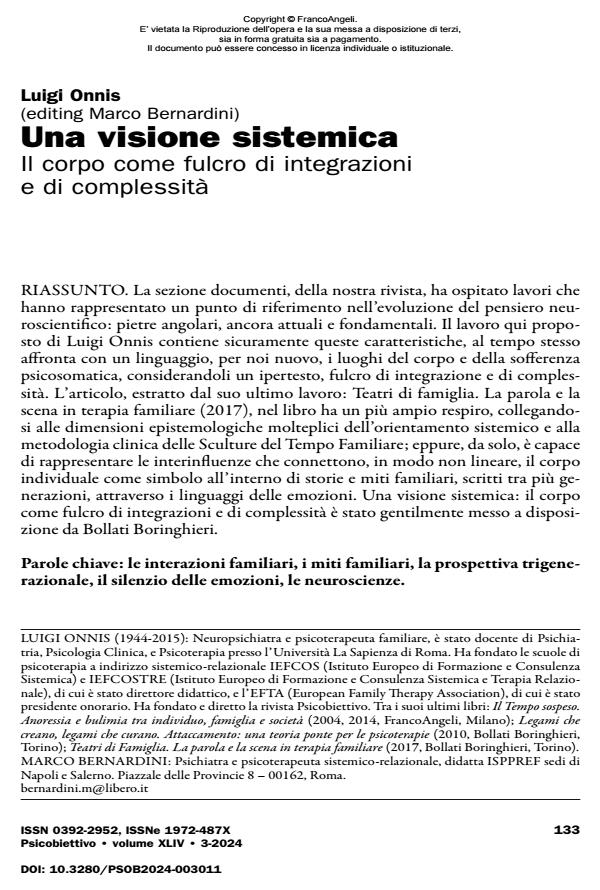A systemic perspective. The body as a fulcrum of integration and complexity
Journal title PSICOBIETTIVO
Author/s Luigi Onnis, Marco Bernardini
Publishing Year 2025 Issue 2024/3
Language Italian Pages 15 P. 133-147 File size 167 KB
DOI 10.3280/PSOB2024-003011
DOI is like a bar code for intellectual property: to have more infomation
click here
Below, you can see the article first page
If you want to buy this article in PDF format, you can do it, following the instructions to buy download credits

FrancoAngeli is member of Publishers International Linking Association, Inc (PILA), a not-for-profit association which run the CrossRef service enabling links to and from online scholarly content.
The “Documents” section of our journal has hosted works that have represented a point of reference, often, of departure with respect to the evolution of neuroscientific thought: cornerstones, still current and fundamental. The work proposed here by Luigi Onnis certainly contains these characteristics, at the same time it addresses the places of the body and psychosomatic suffering with a language, new to us, considering them a hypertext fulcrum of integration and complexity. The article, extracted from his latest work: Family Theaters. The word and the scene in family therapy (2017), in the book has a broader scope, connecting to the multiple epistemological dimensions of systemic orientation and to the clinical methodology of the Sculptures of Family Time, yet, on its own, it is able to represent the interinfluences that connect the body as a symbol within family stories and myths in a non-linear way, written between several generations, through the languages of emotions.A systemic vision: the body as the fulcrum of integrations and complexity has been kindly made available by Bollati Boringhieri.
Keywords: family interactions, family myths, three-generational perspective, the silence of emotions, neuroscience.
Luigi Onnis, Marco Bernardini, Una visione sistemica Il corpo come fulcro di integrazioni e di complessità in "PSICOBIETTIVO" 3/2024, pp 133-147, DOI: 10.3280/PSOB2024-003011